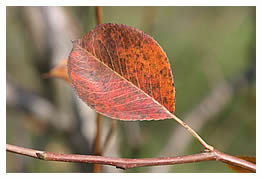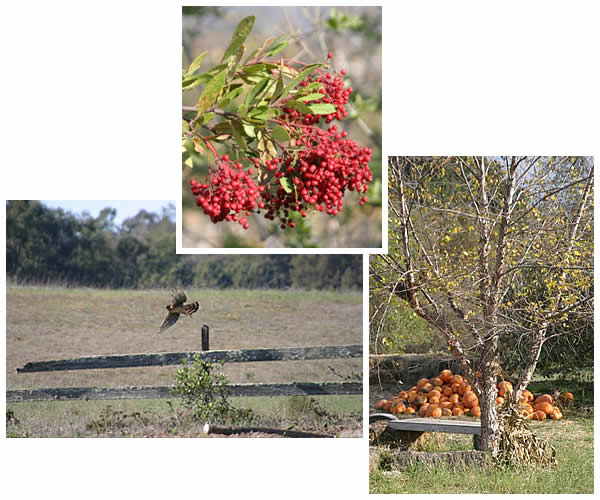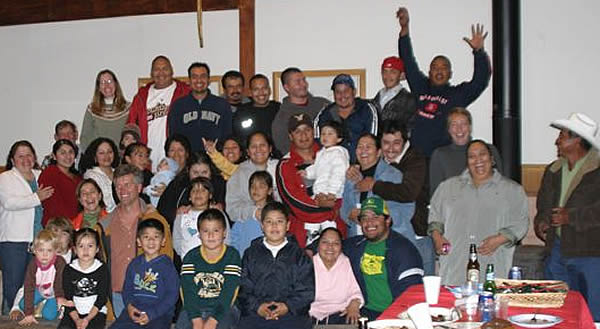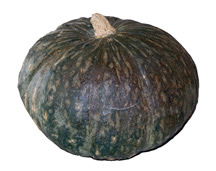
~~~~~~~~~~~~~~~~~~~~~~~~~~~~~~~~~~~~~~~~~~~
Live Earth Farm (Com)Post
1st Harvest Week, Winter 2007/2008
November 28th, 2007
~~~~~~~~~~~~~~~~~~~~~~~~~~~~~~~~~~~~~~~~~~~
In this issue
--Greetings from Farmer Tom
--Student poem
--What's new in the Winter CSA
--Pictures around the farm
--What's in the box this week
--Notes from Debbie's Kitchen
--Contact Information
No quote this week - see student poem, below!
Greetings from Farmer Tom
~~~~~~~~~~~~~~~~~~~~~~~~~~~~~~~~~~~~~~~~~~~~~~~~
Well, the response for our second Winter CSA has been truly wonderful. Some folks probably wonder what the farm could have to offer during these more barren months of the year. Others may wonder, ‘why the funny, staggered schedule; why not a share every week like during the regular season?’ and ‘how come there are far fewer winter shares than regular season shares?’ All are good questions, of course, which I hope to answer here. Inherently, winter is a season of uncertainty, where the weather is calling the shots. In the true spirit of Community Supported Agriculture, your commitment means you are willing to accept this greater uncertainty, including what your share in the harvest will be. Pacific storms, flooding, freezing temperatures, equipment breakdowns, all sorts of things can contribute towards extremely difficult harvest and field conditions, which in turn can translate into more variability and uncertainty in terms of quantity and diversity of the crops in your shares. We have planned ahead though; most of our winter crops were purposefully planted on a staggered schedule, so as to mature at different times. Crops such as carrots, cabbage, cauliflower, beets, and kohlrabi were planted in back in August and September, and are ready for harvest now or over the next couple of weeks. Later October plantings will take much longer – almost twice the normal time – to mature [shorter days, less daylight, colder temperatures all contribute to slower growing], so we don’t expect their harvest until the first few months of the New Year. But we have done our best to plan for an adequate harvest over the course of our winter CSA, barring the aforementioned uncertainties!
 The first frost of the season descended on us last week, marking the beginning
of the dormant season. With the advent of the Thanksgiving holiday, I always
feel a shift in my life where the outward dynamic is turned inward. It's a time
where I like to renew relationships with friends and strengthen the ones within
my own family. The slower pace of shorter days and cooler temperatures allows
for a little more rest, and gives space for reflection on my own inner landscape.
Like a tree which loses it's leaves and stores its energy in the depth of it's
roots, the winter season is an opportunity to quiet the chatter of my mind, so
often stimulated by outside distractions, and shift my focus on my quieter and
often invisible inner reality. This is not always easy to do in the hectic and
consumer driven society we live in. With the holidays upon us we become increasingly
overwhelmed with a flurry of activities, and a box of winter vegetables may feel
more like a burden than the gift of nature that it is. Admittedly parsnips, winter
squash or celery root are not like the "sexy" and instantly gratifying
vegetables we enjoy in the summer. However they they have their own qualities.
They oblige us to slow down... a warm soup or hearty vegetable stew takes time
to prepare. Aaaahhhh... Our bodies are rewarded by a nourishing meal, and the
preparation may offer moments of quiet reflection during this often overwhelmingly
busy time of year. So we encourage everyone to enjoy the unique culinary treats
winter has to offer, and from all of us here at the farm, we thank you for your
commitment during this time of year.
The first frost of the season descended on us last week, marking the beginning
of the dormant season. With the advent of the Thanksgiving holiday, I always
feel a shift in my life where the outward dynamic is turned inward. It's a time
where I like to renew relationships with friends and strengthen the ones within
my own family. The slower pace of shorter days and cooler temperatures allows
for a little more rest, and gives space for reflection on my own inner landscape.
Like a tree which loses it's leaves and stores its energy in the depth of it's
roots, the winter season is an opportunity to quiet the chatter of my mind, so
often stimulated by outside distractions, and shift my focus on my quieter and
often invisible inner reality. This is not always easy to do in the hectic and
consumer driven society we live in. With the holidays upon us we become increasingly
overwhelmed with a flurry of activities, and a box of winter vegetables may feel
more like a burden than the gift of nature that it is. Admittedly parsnips, winter
squash or celery root are not like the "sexy" and instantly gratifying
vegetables we enjoy in the summer. However they they have their own qualities.
They oblige us to slow down... a warm soup or hearty vegetable stew takes time
to prepare. Aaaahhhh... Our bodies are rewarded by a nourishing meal, and the
preparation may offer moments of quiet reflection during this often overwhelmingly
busy time of year. So we encourage everyone to enjoy the unique culinary treats
winter has to offer, and from all of us here at the farm, we thank you for your
commitment during this time of year. – Tom
<back to top>
Student poem
~~~~~~~~~~~~~~~~~~~~~~~~~~~~~~~~~~~~~~~~~~~~~~~~
Sydney is a student at Santa Cruz Montessori/Wavecrest middle school, and she
kindly shared a poem inspired by her weekly class activities here on the farm.
Sydney’s
poem is this week’s ‘quote’.
Farmland Fields
An open playground
Of learning and wonder
Spread as far as the eye can see.
The smells
Of the fresh air
And plants surrounding me
Are swept up to my nose
By the tender wind.
The tastes
Of the mouth-watering crops
So gently planted into the earth
Make my taste buds intrigued.
It brings inspiration
And thought
It feels like home.
Bursts of color
The soft earth tones
And the vivid colors in the flowers
Bring delight to the eye.
A new foundation
To live and learn
A sense of pleasure
And excitement.
Sydney Sharek
10/07
<back to top>
What's new in the Winter CSA
~~~~~~~~~~~~~~~~~~~~~~~~~~~~~~~~~~~~~~~~~~~~~~~~
If you haven’t heard already, we have a couple of exciting new additions
to this year’s Winter CSA:
First of all, we are adding some bread! A local (Santa Cruz) artisinal baker
will be making loaves for us, with organic ingredients, and from as local as
she can find them. Everyone should get 4 loaves over the course of our 8-week
winter season. They will be staggered, so half the pick-up locations will
get them one week, and the rest will get them the following week. *This week,
our members ‘over the hill’ (Los Gatos, Willow Glen, Santa Clara,
Sunnyvale) will get bread; next week, everyone else will get it, and this alternation
will continue through the winter season.
Also new: everyone will get 2 jars of our dry-farmed tomatoes (not at the same
time; they will be spaced out somewhere during the 8 weeks) which were canned
by Happy Girl Kitchens over the summer. We will tell you in the ‘what’s
in the box’ list which weeks they will be included.
Not new, but rather staples which you can expect regularly are crops which we
store, such as winter squash, apples, and onions. And of course there are always
going to be surprises and mystery items to spice up the recipes as well. Bon
appetit!
<back to top>
Pictures around the farm
~~~~~~~~~~~~~~~~~~~~~~~~~~~~~~~~~~~~~~~~~~~~~~~~
Some colorful, contemplative moments, scenes...

And another moment... colorful yes, but contemplative, perhaps less so!
Here is the whole crew, including spouses and children,
having a great time at our end-of-season farmworker celebration!

<back to top>
What's in the box this week
~~~~~~~~~~~~~~~~~~~~~~~~~~~~~~~~~~~~~~~~~~~~~~~~
Lettuce (bibb and/or red leaf)
Kale (Red Russian)
Chard
Broccoli
Bag of parsnips (from Lakeside)
Winter squash (butternut, Kabocha and/or sweet dumpling)
Cilantro
Brussel sprouts
Apples (from Bob Silva)
Celery root (from Lakeside)
Onions (from Pinnacle Farms)
Bread (*see What’s new in the Winter CSA, above)
<back to top>
Notes from Debbie's Kitchen
~~~~~~~~~~~~~~~~~~~~~~~~~~~~~~~~~~~~~~~~~~~~~~~~
(Click
here to go to recipe database)
I have a large variety of recipes for you this week; some from members, others
from my seemingly bottomless supply of clippings! - Debbie
Let's start with Member Lauren Thompson, who
posted this brussel sprout recipe on the LEFCSAfriends yahoo group not long
ago, saying even their two-year old, Kai, proclaimed: "more
brussel sprouts" and "yummy!"
Best Brussels Sprouts
“The name says it all!” says Lauren.
These sweet-and-sour sprouts are wonderful hot or at room temperature.
serves 4
1 lb. fresh Brussels sprouts, cleaned, trimmed, and cut in half
2 tbsp. olive oil (or 1 tbsp. olive oil and 1 tbsp. butter or margarine)
salt to taste
¾ C vegetable stock or water
2 tbsp. sugar
2 tbsp. apple cider vinegar
freshly ground black pepper, to taste
Heat the oil in a sauté pan or well-seasoned cast iron skillet over medium-high
heat. When hot, add the Brussels sprouts and sprinkle with salt. Sauté,
stirring occasionally, until the sprouts are turning golden, about 5 to 10 minutes.
Add ½ cup of the stock or water and bring to a boil. Lower the heat and
simmer, covered (with a lid left slightly ajar), until the Brussels sprouts are
almost completely tender and the stock or water has been cooked away, about 10
minutes.
Remove the lid and add the last ¼ cup of stock or water, the sugar, and
the apple cider vinegar. Cook at a lively simmer, stirring occasionally, until
the liquid is reduced to a syrup, about 5 minutes. Taste for salt and season
with pepper. Serve hot or at room temperature.
Member Odile Wolf sent me this very simple French
recipe, for use ‘the
next time we have celeriac (celery root)’.
Celeri Remoulade
a celery root, very finely shredded
some lemon juice
some mayonnaise
As soon as you have shredded the celery root, add some lemon juice so that
it stays white. Then, simply add in some mayonnaise. Odile says that if you use
home made mayo, add it just before serving, otherwise the celery will "wilt"),
otherwise, you can add it whenever.
Member Amoreena Lucero sent me the following recipe over a year ago. She says
it is really wonderful, and recommends increasing the sage (as others had suggested
on the recipe website she got it from):
Butternut Squash with Shallots and Sage
Gourmet, October 2005
Serves 4
[I have edited this only slightly – Debbie]
2 tbsp. olive oil
3 shallots, halved lengthwise, then cut crosswise into 1/4-inch-thick slices
(~3/4 C)
1 large butternut squash, peeled, halved lengthwise, seeded, and cut into 1/2-inch
cubes (~4 C)
1/2 C chicken broth or water
1 tbsp. packed brown sugar
1/2 tsp. finely chopped fresh sage [everyone recommends more]
1/2 tsp. salt
1 tsp. balsamic vinegar
1/4 tsp. black pepper
Heat oil in a 12-inch heavy skillet over moderate heat until hot but not smoking,
then cook shallots and squash, stirring, until shallots are softened, about 5
minutes.
Add broth, brown sugar, sage, and salt, stirring until sugar is dissolved. Simmer,
covered, stirring occasionally, until squash is tender, 8 to 10 minutes. Remove
from heat and stir in vinegar, pepper, and salt to taste.
Here are some excerpts I took from a website www.vegparadise.com...
on
Kabocha Squash
 Called Japanese pumpkin, kabocha began its history in Japan where it was favored
for its sweetness and pleasing texture. Kabocha's hard, deep green skin, boasts
exceptional flavor to those who have had the pleasure of tasting its succulent,
naturally sweet flesh. Kabocha, pronounced kah-bow-cha, is even sweeter than
butternut squash, though we've encountered the occasional one that forgot to
be sweet. The flavor and texture of the Japanese pumpkin is likened to that of
a sweet potato crossed with a pumpkin. Similar in shape to a pumpkin, kabocha
is a bit more squat, has a very short grey stem, and is more dense than a pumpkin
because of its smaller cavity. The firm flesh inside is an intense yellow-orange
color.
Called Japanese pumpkin, kabocha began its history in Japan where it was favored
for its sweetness and pleasing texture. Kabocha's hard, deep green skin, boasts
exceptional flavor to those who have had the pleasure of tasting its succulent,
naturally sweet flesh. Kabocha, pronounced kah-bow-cha, is even sweeter than
butternut squash, though we've encountered the occasional one that forgot to
be sweet. The flavor and texture of the Japanese pumpkin is likened to that of
a sweet potato crossed with a pumpkin. Similar in shape to a pumpkin, kabocha
is a bit more squat, has a very short grey stem, and is more dense than a pumpkin
because of its smaller cavity. The firm flesh inside is an intense yellow-orange
color.
TO BAKE: Simply wash the squash and place, whole on a baking dish. Bake at 400
for 50 to 60 minutes. To shorten the baking time, cut the squash in half with
a heavy knife or cleaver. Place the knife or cleaver on the squash, slightly
off center to avoid the stem, then with a hammer or mallet, pound the knife where
the blade joins the handle until the squash splits in half. Scoop out the seeds,
brush cut areas with a little canola oil and place cut side down on a lightly
oiled baking dish. The squash bakes in about 40 to 50 minutes at 400 (375 for
pyrex.) The flesh can then be scooped out with a large spoon. The cooked kabocha
is so deliciously sweet that it needs none of the usual fats and sweeteners traditionally
added to bland squashes.
[Here’s the bit I found very interesting, as I didn’t realize you
could eat the skin! Read on – Debbie] If you wrap the squash in aluminum
foil, its skin, which is completely edible and highly nutritious, will remain
soft enough to enjoy along with the delicious flesh.
TO STEAM: Use a very firm chef's knife to cut squash in half [see above, under ‘To
Bake’], scoop out seeds, and lay cut side down on cutting board. Japanese
and Southeast Asian cooks prefer to leave the skin on the squash. However, if
you choose to remove the skin, here's what to do: Using both hands with the knife
in a horizontal position, peel off the skin by holding the blade away from the
body and using a pushing motion to cut. Cut squash into cubes and place in a
steamer with sufficient water. Turn heat to high and steam for 7 to 10 minutes.
TO BRAISE: Cut into cubes as above and add to stews or soups the last 10 minutes
of cooking.
Debbie here now... in my experience, the kabocha is indeed really difficult to
peel, so I was quite pleased to read, above, that the skin is edible! Do be careful
if you try to peel it with a knife; do as they recommend, and cut the squash
in half first, so it can rest solidly on your cutting board while you more or
less carve the skin off. Another thing I discovered about kabocha is that, because
it is so dense, it is a ‘dryer’ squash, if you will, and so does
not work so well when roasted. You want to introduce steam somehow. Let me explain.
The first time I cooked kabocha, I used a butternut squash recipe – one
where you peel and then cut the squash into pieces, coat with oil and garlic
and roast ‘until soft’ in an oven (then toss with brown butter and
crispy sage leaves...yum!). The squash was soft when I did this, but was also
fairly dry; sucked the moisture out of your mouth kinda like a too-big spoonful
of peanut butter. I think all you would need to do in that circumstance (i.e.
how to modify a similar squash recipe) would be to enclose the squash (in a dish
covered with foil, say) so that it ‘steams’ in its own moisture.
Good thing to know.
 Here’s an interesting recipe I found for
parsnips...
Here’s an interesting recipe I found for
parsnips...
Fiery Parsnips
(from an un-dated newspaper clipping in my files)
serves 4 as a side dish
2-3 parsnips, about 7 oz.
½ tsp. sesame oil
1 tsp. sake
½ tsp. sugar
2 tbsp. soy sauce
pinch of shichimi togarashi (a blend of dried chile peppers, herbs and spices
sold in Japanese markets)
White seasame seeds, freshly dry-roasted for garnish (optional)
To free parsnips of dirt or other gritty material, scrub them with rough side
of kitchen sponge [a clean one!] or scrape them with the back of a knife. The
peel, however, is nutritious and tasty and should not be stripped away. Slice
parsnips into narrow julienne strips about 1 ¼ inches long. You should
have about 1 ½ C of strips. Spread them out on a towel to dry.
In a nonstick skillet, heat sesame oil over high heat. Add parsnips and stir-fry
1 minute, stirring constantly. Add sake and stir-fry 1 minute more. Add sugar
and cook, stirring occasionally, 3 to 4 minutes more, or until parsnips are lightly
caramelized. Add soy sauce and continue to cook and stir 1 or 2 minutes or until
liquid is nearly gone and parsnips are just tender and well glazed.
Sprinkle with shichimi togarashi and toss to distsribute well. Remove Pan from
heat and let parsnips cool to room temperature.
Mound in small bowls as individual portions, or serve in a single bowl, family
style, and garnish with sesame seeds, if desired.
To dry-roast sesame seeds, heat a small heavy skillet over medium-high heat.
Add sesame seeds. Stir occasionally with a wooden spatula or gently swirl skillet
in a circular motion. In about a minute, white sesame seeds will begin to color.
As soon as you begin to smell the aromatic oils being released, remove skillet
from heat. Stir for another 20 seconds, then remove seeds to a dish to cool.
Here are two other parsnip recipes, which I borrowed
from fellow recipe maven and CSA farmer Julia Wiley, of Mariquita Farm. Oh,
and the parsnip image above is also courtesy of Mariquita. (Thanks, Julia,
for letting me borrow!):
Julia's Parsnip Oven Fries
Several Parsnips
Olive oil
salt and pepper
Peel and thinly slice parsnips, I think about the width of a slender fast food
French fry. Mine are not nearly as uniform as restaurant fries, but it adds to
the charm of this dish. Put parsnip strips in a mixing bowl and splash in some
olive oil, sprinkle with salt and pepper and mix to coat, I'm somewhat generous,
but I end up using lots less than I would if I actually fried them. Spread the
parsnips out on a large jelly roll baking pan. Bake at 450, mixing with a long
wooden spoon every 10 minutes or so until browning and crispy. Warning: these
are addictive. Our children even like them...
Parsnip-Pecan Cake
adapted from Marian Morash's ‘Victory
Garden Cookbook’
Yield: one 10" tube pan
1 1/4 C cooking oil, such as safflower or 'light' olive
1 ¼ C sugar
2 C flour
1 tbsp. baking powder
1 tbsp. baking soda
2 tsp. cinnamon
1/4 tsp. salt
4 eggs
3 C grated raw parsnips
1 1/2 C chopped pecans
Preheat oven to 325 degrees F. Thoroughly combine oil and sugar. Sift together
dry ingredients and add to oil and sugar, alternating with eggs. Beat well after
each addition. Mix in parsnips and then pecans. Pour into buttered tube pan.
Bake in a preheated 325 degrees F oven for 1 hour and 10 minutes. Cool in pan
for 10 minutes before removing.
Another undated recipe clipping, but this one I see is credited Deborah Madison’s ‘Vegetarian
Cooking for Everyone’:
Roasted onions on a bed of herbs
Serves 6
2 tbsp. butter
2 tbsp. olive oil
3 large yellow onions, halved lengthwise from root to top and peeled
Salt and freshly milled pepper to taste
4 sage sprigs
Several thyme sprigs
1 C dry white wine or water
Preheat oven to 375 degrees.
Heat butter and oil in a wide skillet, then add the onions, cut sides down. Cook
over medium-high heat until well browned, about 15 minutes [In my experience,
if you have a good cast-iron skillet, that works best for this kind of thing!].
Check their progress occasionally. Those on the outside of the pan usually take
longer to cook, so partway through switch them with those in the middle. When
browned, turn onions over and cook on the curved side for a few minutes. Season
well with salt and pepper.
Line the bottom of a 10-inch ceramic dish such as a round Spanish casserole with
the herbs. Place the onions, browned side up, atop the herbs and pour in the
wine or water. cover with aluminum foil and bake until tender when pierced with
a knife, 1 hour or slightly longer. Serve warm.
Here is a more recent clipping for a 'side-dish'
recipe (yes, the article was about Thanksgiving, but that doesn’t mean that’s the only time you
could make this!) from a book called ‘Vegetable Harvest’ by Patricia
Wells:
Broccoli puree with a hint of mint
[modified slightly – Debbie]
1 lb. broccoli florets and stems, trimmed and rinsed
½ C fresh mint leaves and stems, rinsed
Fine sea salt
Steam broccoli until soft and cooked through, about 10 minutes. With a slotted
spoon, transfer broccoli to a food processor or blender. Add mint and salt and
puree to a smooth-textured puree.
And lastly, here is a really unusual sounding cilantro
and garlic-centric chicken dish, from a clipping I’ve had for awhile; cookbook source referenced is ‘One
Spice, Two Spice’ by Floyd Cardoz. I was intrigued by the flavor combination
of cilantro and garlic with chiles, cinnamon and cloves...
Chicken Cafreal
[I have halved the recipe – Debbie]
Serves 3 to 4
1 2 ½- to 3-pound chicken, or equivalent weight of chicken pieces, rinsed,
drained and patted dry
¼ C fresh lime juice
¼ lb. cilantro (including stems with roots), coarsely chopped
5 whole garlic cloves, peeled
2 tbsp. thinly sliced peeled ginger
½ mild to moderately hot fresh green chile, cut crosswise into pieces
½ tbsp. cumin seeds
¾ tsp. black peppercorns
2 cloves
¼ cinnamon stick [approximately]
½ tbsp. kosher salt
Cut backbones from chickens with a large heavy knife (freeze for later use in
making stock). Crack the keel bone, in the center of the breast, so the chicken
lies flat. Lightly pierce the chicken all over with a kitchen fork.
Put lime juice, cilantro, garlic, ginger and chile in a blender or food processor
and puree until smooth.
Finely grind cumin seeds, peppercorns, cloves and cinnamon in an electric coffee/spice
grinder.
Put cilantro puree in a large bowl and stir in ground spices and salt. Put chicken
into bowl and rub all over with marinade. Refrigerate any left-over marinade.
Put chicken in a large resealable plastic bag and refrigerate. Marinate in refrigerator
for 6 to 24 hours.
Preheat oven to 400 degrees. Put a tiny amount of water (about 1/8 inch) in a
13-by-9-inch roasting pan and fit chicken into pan. Lightly pat any remaining
marinade on top. Roast in middle of oven until done, about 1 hour. Cut chickens
into serving piefces and serve pan juices on the side.
<back to top>
Contact Information
~~~~~~~~~~~~~~~~~~~~~~~~~~~
email Debbie at the farm (for any farm or CSA share-related business): farmers@cruzio.com
email Debbie at home (with newsletter input or recipes): deb@writerguy.com
farm phone: 831.763.2448
website: http://www.liveearthfarm.net
~~~~~~~~~~~~~~~~~~~~~~~~~~~